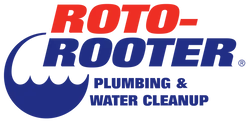Top Techniques for Identifying and Solving Tree Root Problems in Drains
In Southern Utah, tree root intrusion into sewer and drainage systems poses a significant challenge due to the region’s dry climate, compacted soils, and persistent root growth in search of moisture. Fortunately, there are several effective techniques available to detect and address these issues before they cause severe damage. Ground penetrating radar (GPR) is especially valuable in this environment. It allows plumbers and technicians to locate root masses and pipe defects beneath rocky or mineral-rich soil without digging. While physical inspections may still be necessary in developed neighborhoods, careful planning is essential to avoid further compromising brittle or aging underground lines.
Air spading, typically used in arboriculture, is also useful here to clear soil around shallow plumbing lines for visual inspection without harming the pipes. This is particularly helpful in Southern Utah’s dense, dry terrain where tree roots aggressively search for water. Monitoring moisture distribution in the soil is equally important, as fluctuating irrigation patterns can attract roots toward pipe joints and cracks. By combining these non-invasive and targeted methods, plumbing professionals can effectively maintain drainage systems in Southern Utah’s high desert conditions.
Recognizing Signs of Tree Root Intrusion in Drain Lines
In Southern Utah, recognizing early signs of root intrusion into drain lines is crucial due to the area’s arid conditions and widespread use of clay-heavy soils. These soils tend to crack and shift, creating weak points in aging sewer lines that roots can easily exploit.
Common warning signs include recurring slow drains or backups in toilets and sinks, especially after watering trees or during monsoon season. You may also notice gurgling sounds, foul odors from floor drains, or damp patches in your yard where pipes run underground. These are often indicators that roots have infiltrated your pipes and are obstructing flow.
Unlike humid regions where fungal growth might be a warning sign, root intrusion in Southern Utah is often linked to inconsistent irrigation or trees planted too close to aging infrastructure. Prompt detection of these symptoms helps you avoid total blockages and pipe collapse, which are costly and disruptive to repair.
Utilizing Ground Penetrating Radar (GPR)
IWhen tree roots start infiltrating sewer lines, early detection is key. In places like St. George, where rock-heavy and compact soils dominate, traditional excavation is both difficult and risky. That’s where ground penetrating radar (GPR) becomes invaluable.
GPR scans below the surface to detect inconsistencies in the soil that indicate the presence of tree roots, voids, or broken pipe sections—without disturbing the ground. For plumbers and utility professionals, this means identifying problem spots without invasive digging.
In Southern Utah, where new construction often overlays older infrastructure, GPR also helps map root-prone zones that may threaten modern PVC and ABS lines. Whether you’re dealing with native vegetation or invasive species with aggressive root systems, GPR provides the insights needed to make targeted repairs and mitigate future issues.
Conducting a Soil Excavation
Sometimes, the only way to confirm the extent of root damage in a drain line is through careful soil excavation. In Southern Utah’s high desert, the dry, hardened soil can make digging a slow, methodical task, but it’s essential when addressing persistent backups.
Start by identifying where the sewer or drain line is located—often marked by damp soil, depressions, or vegetation growth directly above it. Using a shovel or trenching tool, gently remove soil to expose the pipe and inspect it for root infiltration at joints or cracks.
Take caution during this process. Excessive force can damage the pipe further, especially if it’s made from older clay or cast iron material, which is common in older neighborhoods. In high-risk areas, combining excavation with camera inspection is often the most effective strategy for confirming the presence and extent of root intrusion.
Assessing Root Health With Hydro Jetting
Hydro jetting is a highly effective, non-invasive technique for clearing tree root intrusions and evaluating pipe health without physical excavation. In Southern Utah, where the dry, compacted soils of the high desert are common, this method allows residents and plumbers to safely flush out intrusive roots using high-pressure water.
This approach is particularly useful in St. George and surrounding communities, where prolonged drought and root infiltration often lead to sewer line backups and partial blockages. By blasting away root obstructions, hydro jetting not only clears the path for better drainage but also helps reveal cracks or entry points that need repair.
It also helps prevent root regrowth when followed by root-killing treatments or lining procedures, especially in urban and suburban areas where invasive tree species are common. Hydro jetting provides valuable insight for making informed decisions about long-term sewer line health in Southern Utah’s unique environment.
Evaluating Drain Line Behavior and Performance
Once root damage has been confirmed or suspected, it’s important to evaluate how it affects the flow and performance of your drainage system. This can be done by observing water behavior in sinks, showers, and toilets.
Irregular drainage patterns—like slow flushing, bubbling in adjacent fixtures, or backups occurring in lower-level drains—may signal a partially blocked main line. These symptoms are particularly common in Southern Utah’s older homes, where clay pipes and large desert trees coexist.
You should also track the frequency of these problems. A single backup may be a fluke, but repeated clogs are a warning sign of deeper issues. If left unchecked, root invasions can eventually cause full collapses, backups, and contamination of soil with raw sewage.
Monitoring Soil Moisture Levels
Roots naturally seek out moisture—and your sewer lines are an attractive source, especially in dry climates. Monitoring soil moisture is one way to mitigate this risk.
In Southern Utah, where homeowners often rely on drip irrigation or surface watering, roots are drawn toward the consistent moisture surrounding aging pipes with tiny leaks. By improving irrigation practices—such as deep watering away from sewer lines—you can redirect roots away from vulnerable areas.
Moisture sensors or manual soil checks help track where your landscaping might be contributing to the problem. Installing moisture barriers or root shields between trees and sewer lines can also prevent future intrusion.
Engaging Professional Inspection Services
While some signs of tree root damage in sewer lines are obvious, many require professional inspection to identify accurately. In Southern Utah, a qualified plumber with camera equipment can inspect the full length of your drain line and provide a detailed assessment.
These professionals are trained to recognize specific types of root damage and know how to differentiate them from other pipe issues like sediment buildup or corrosion. They can also recommend advanced solutions like hydro jetting, pipe lining, or trenchless root removal depending on the severity.
Hiring an expert might seem like a big step, but catching root intrusions early can save you thousands in emergency repairs and cleanup. Plus, many inspection services offer preventative care plans that include regular monitoring—especially important in landscapes where trees and plumbing often overlap.
Conclusion
To effectively address tree root problems in sewer lines across Southern Utah, you need a localized, multi-step strategy. Begin by identifying early warning signs such as slow drains, foul odors, or unusual vegetation growth above buried pipes. Leverage tools like ground penetrating radar for non-invasive diagnostics, especially in areas with hard soils and limited access. When necessary, perform targeted soil excavations or use air spading to safely expose vulnerable lines without causing further damage. Regularly evaluate how your drain lines are functioning, and pay attention to soil moisture levels that could be attracting roots. Most importantly, don’t hesitate to engage professional services for thorough inspections and tailored solutions. With proactive monitoring and expert care, you can preserve both your property and your sewer system in Southern Utah’s high desert environment.
Tags






